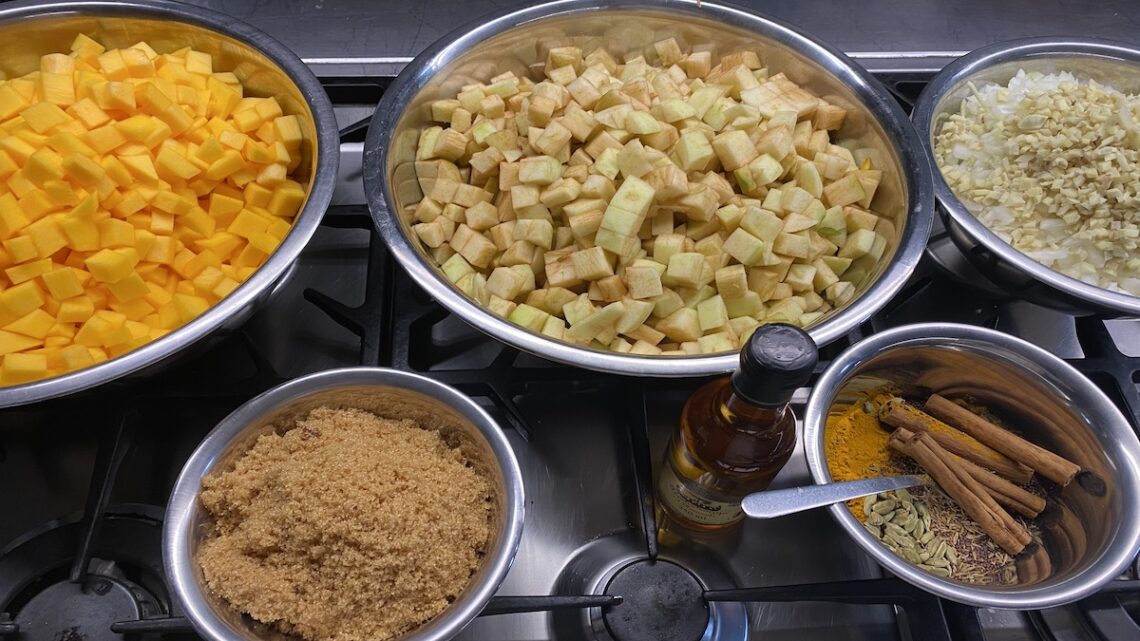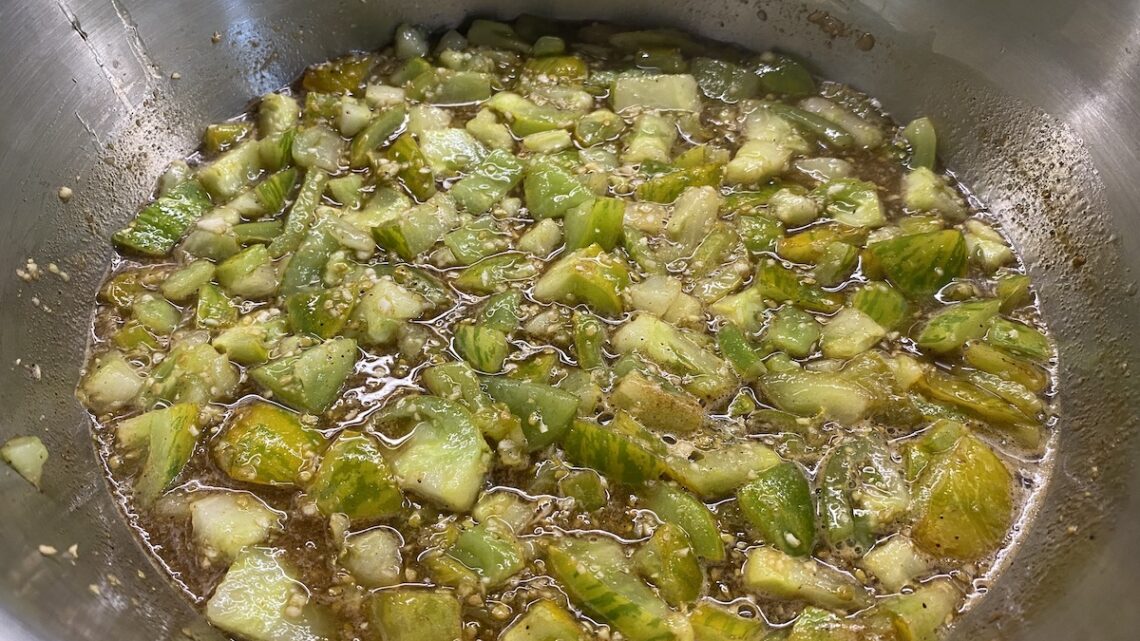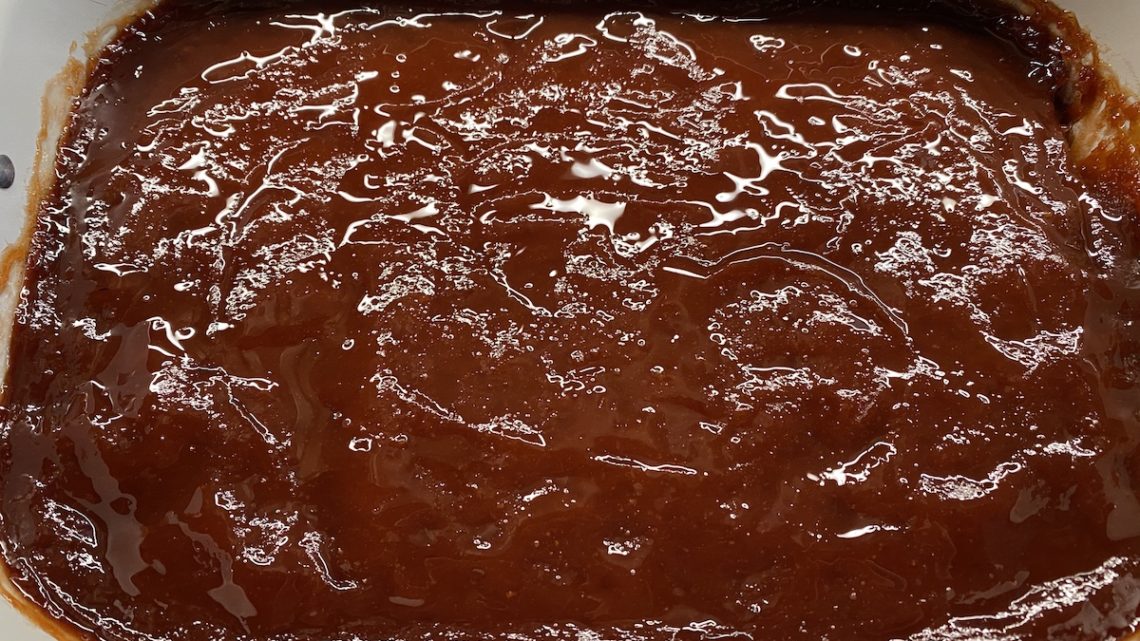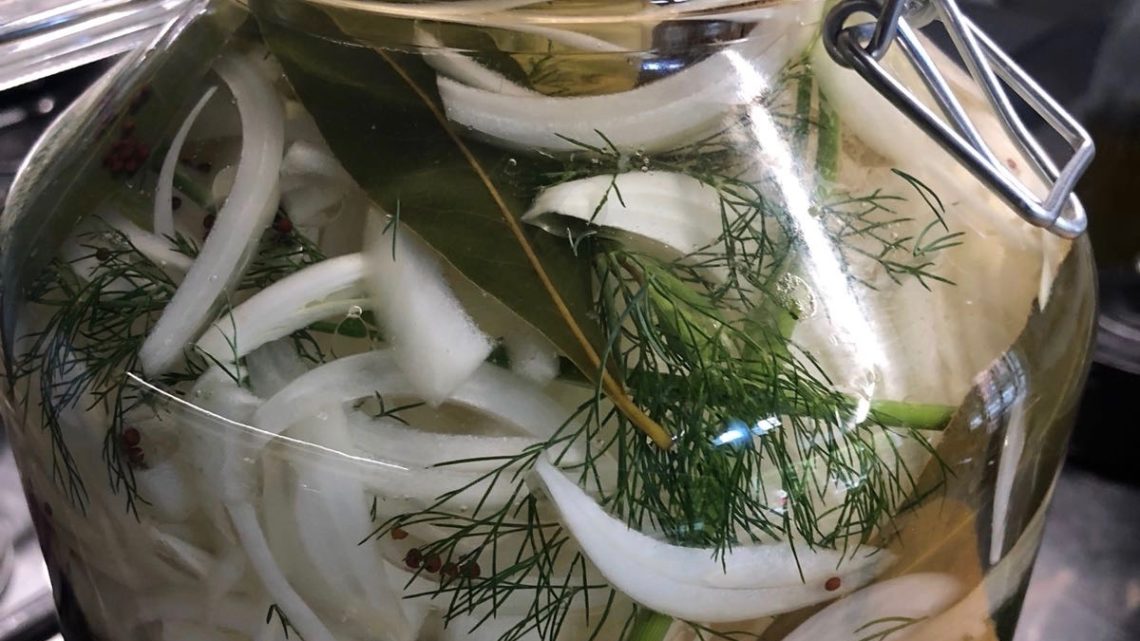Elderberry cordial
This cordial is perfect as a mixer with water, sparkling water, in cocktails or as a fruity salad dressing.
Makes about 500 ml
Ingredients
500g elderberries
300ml water
300g sugar
60ml lemon juice
Method
Put the elderberries, water and sugar into a pan and bring to the boil, stirring to dissolve the sugar. Once boiling, turn down the heat and simmer for about 25 minutes until the berries have popped open and the liquid has reduced down to a syrup. Stir in the lemon juice.
Remove from the heat and strain through muslin. Pour into sterilised bottles and store in the fridge for up to 6 months.
Apple sauce
This is great to use with fatty meats such as pork and duck or in desserts. Try and get Bramley apples to make it. They're incredibly tart which works well flavour-wise and they break down to a beautiful thick puree.
Ingredients
5 Bramley apples
50g butter
75g demerara sugar
dash of water
lemon juice to taste
2 pinches cinnamon
Method
Peel, core and slice the apples.
Melt the butter in a pan over medium-low heat. Add the apples, sugar and water and cook gently until the apples are soft and pureed.
Stir in the cinnamon and lemon juice, then transfer to a sterilised jar. Allow to cool before serving.
Preserved Lemons
Preserved lemons are easy to make. They are used a lot in Middle Eastern and North African cooking to add a citrusy boost to dishes.
Ingredients
4-6 lemons, washed per jar
1 tablespoon salt per lemon
1-2 bay leaves per jar
Method
Sterilise a couple of jars (whatever size you have).
Cut the lemons lengthways into quarters keeping the stalk end on.
Mix them with 1 tablespoon salt per lemon and stuff them into the jars as tightly as you can, add 1-2 bay leaves per jar. Gradually over the course of a few days, liquid will be released from the lemons. The liquid should cover the lemons completely.
At the end of that time they should be refrigerated. The lemons will last for a year if you make sure you use a clean spoon whenever you remove any from the jar. To use, discard the flesh of the lemons and use the rind.
Pumpkin & apple chutney
If you happen to be passing a farm store, pumpkins and apples are fully available. Make this delicious apple and pumpkin chutney to enjoy through the winter with curries, cold cuts and cheese.
Ingredients
4 tablespoons sunflower oil
2 onions, peeled and finely chopped
100g ginger, peeled and sliced into thin strips
1 red chilli, deseeded and finely chopped
15 cardamom pods, smashed open
2 cinnamon sticks
1 tablespoon black mustard seeds
2 teaspoons cumin seeds
5 cloves garlic, peeled and finely chopped
1 kg pumpkin, peeled and cut into small cubes
500g Bramley apples, peeled and cut into small cubes
1 teaspoon ground turmeric
500g light brown sugar
300ml cider vinegar
Method
Heat the oil in a large pan, then gently fry the onions until soft. Add the garlic, ginger, chilli, cardamom, cinnamon, mustard and cumin seeds and turmeric and fry together for 5 minutes.
Add the pumpkin and apples to the pan. Cook for 10-15 minutes until the ingredients are softened.
Stir in the sugar and let it melt around the vegetables. Simmer for 5 minutes.
Pour in the vinegar, season with 2 teaspoons salt and bring to a simmer. Cook, stirring regularly for about 30 minutes or until the apple has cooked down and the pumpkin pieces are tender. There should be a little syrupiness in the pan.
Spoon into sterilised jars and seal. They chutney can be eaten straight away or left to mature in a dark place. Store for up to six months.
Sauerkraut
It's easier than you think to make your own sauerkraut. Have your own supply right through the cold months.
Here's the recipe:
Ingredients
1,2 kg finely shredded white cabbage
1 teaspoon caraway seeds
5 teaspoons fine salt
Method
Place the finely shredded cabbage in a large bowl together with the caraway and salt. Using your hands, knead and squeeze the cabbage for about 10 minutes until the appearance and texture change and water begins seeping from the cabbage.
Place in a jar or container, weight it down and cover with a muslin cloth. Allow to ferment for at least 5 days. This will be a very young sauerkraut. Ferment up to 2 weeks until you have reached your desired strength of flavour.
Place into sterilised jars, cover with a lid and keep in the fridge for up to 6 months.
Click on the link below to see how to mix the cabbage:
green tomato chutney
A perfect way to preserve fresh green tomatoes. Serve with cheese or cold cuts.
Ingredients
1,5 kg green tomatoes, roughly chopped
600g light brown sugar
1 thumb-sized piece of fresh ginger, finely chopped
7 cloves garlic, peeled and finely chopped
1 teaspoon cayenne pepper
700ml malt or cider vinegar
salt, to taste
Method
Place all the ingredients into a large, heavy based can over medium heat and stir until the sugar dissolves. Bring to the boil and cook for about 50 minutes until the chutney has thickened.
Pour the hot chutney into sterilised jars and seal.
membrillo
Ingredients
2kg quince, peeled, cored and roughly chopped
1 lemon juiced and zest pared (use a vegetable peeler)
about 1½ kg sugar
knob of butter
Method
- Put the quinces and lemon zest and juice in a large heavy-based pan. Add enough water to cover the fruit. Bring to the boil, then reduce the heat and simmer for about 1 hr until the quinces are very tender. Strain through a jelly bag or muslin-lined colander. Do not press out the juice – just leave it for at least 4 hrs, or ideally overnight, until the juice has dripped through.
- To make the jelly, put three saucers in the freezer. Measure the juice and return it to the pan (reserve the leftover fruit for the membrillo paste). For each 1 litre juice, add 750g sugar (or for each 100ml juice, add 75g sugar). Bring to the boil, stirring to dissolve the sugar, then boil hard until set. This could take between 5 and 20 mins. To test for set, spoon a little onto a chilled saucer, leave for 1 min, then push your finger through the juice. If it wrinkles, the jelly is set. If not, return to the heat and boil again for a few mins, then test again.
- Remove from the heat and skim off any surface scum with a slotted spoon. Stir in the butter to dissolve any leftover sediment, then stir in the rose water. Pot into sterilised jars, seal and label. Store in a cool, dry place for up to one year.
- To make the membrillo, line a 16 x 24cm shallow oblong tin or tray with baking parchment. Tip the reserved fruit into a food processor and whizz to make a smooth-ish paste. Weigh the paste and for each 1kg paste, add 750g sugar (or for each 100g paste, add 75g sugar).
- Tip the paste and sugar into a large heavy-based pan and heat gently, stirring to dissolve the sugar. Increase the heat and cook, stirring regularly, for 30-45 mins until the paste is thick and golden, and leaves a gap when you run a wooden spoon across the base of the pan. Be careful as the mixture will spit at you and can burn. Spoon into the tin or tray and smooth the top. Leave to cool, then chill overnight until it is very firm.
- Wrap the paste in fresh baking parchment, then over-wrap in foil and store in the fridge for up to 6 weeks.
Preserved Tomatoes
A great way of preserving tomatoes when they are at their best during the summer months. Use them during the winter in pasta sauces, on cheese sandwiches or in a tomato salsa.
Ingredients
2 litres water
60 gr caster sugar
30 gr salt
4 bay leaves
5 cloves
1 tablespoon mustard seeds
130 ml white wine vinegar
2 tablespoons sunflower oil
1 kg firm ripe tomatoes, cut into pieces
10 sprigs dill, roughly chopped
100 g celery, roughly chopped
6 cloves garlic, peeled
2 onions, finely sliced
Method
Bring a large pan with the water, sugar, salt, bay leaves, cloves and mustard seeds to the boil. Once the water has boiled, turn off the heat and allow the water to cool so that all the flavours are released.
Once it's completely cooled, add the vinegar and mix well. Pour the sunflower oil into a 2 liter preserving jar. Place the tomato, dill, celery and garlic in the jar. Add the onions last, so that they are on top. Pour over the cooled liquid, close the lid and place the jar in a warm place (25 C) for 10 days.
The tomatoes, if well sealed, can keep for up to 6 months.
Grape Chutney
We brought the recipe for this delicious chutney back from our trip to South Africa last year. It makes the perfect accompaniment to a cheese board. In our quest not to waste anything, we often use up leftover grapes in this recipe.
Ingredients
5 Granny Smith apples
1 onion
100ml balsamic vinegar
150ml brandy
1,1 kg white or red grapes (preferably seedless)
175g brown sugar
1 teaspoon mixed spice
1 teaspoon ground cinnamon
1/2 teaspoon ground ginger
salt, to taste
Method
Peel and core the apples and finely chop the onion. Pick the grapes from the stalks and wash under cold water.
Place the apples, onions, balsamic vinegar and brandy together in a heavy-based pan. Place over medium heat and simmer for 30 minutes. Stir in the remaining ingredients and cook until the fruits break down and the chutney has become thick and pulpy, about 1 1/2 to 2 hours.
Spoon into sterile jars, allow to cool and store in a dark cupboard or in the refrigerator.








